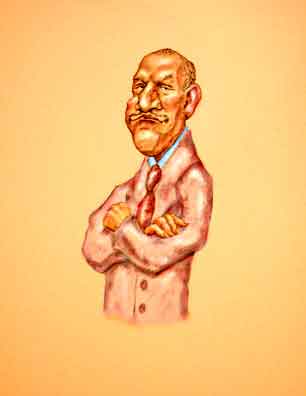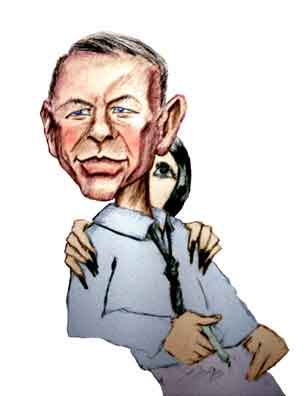
John Elroy Sanford

John Elroy Sanford
In the 1940's, a young stand-up comedian opened up in Chicago. His friends called him "Red" and for his stage name he doubled the "d" and almost inevitably became Redd Foxx.
The clubs where Redd performed were those which are now referred to as catering to "gentleman's interests". The vulgar herd tend to use more crass terms for these establishments, terms which our modern hyper-political correctness eschews. Whatever you call them, between the ladies - ah - dance performances, Redd would do his comedy routines. At that time Chicago was the center of midwestern high life (edging out Kansas City), but to hit the big time you had to go east or west. So the young man went west and relocated to California. Orignally, though Redd was a midwesterner from St. Louis where he was born in 1922 as John Elroy - yes - Sanford.
The 1940's to the 1960's was the heyday of the "party record", that is, albums that were quite literally sold under the counter and that parents might put on when friends were over and the kids were asleep. Redd's material was quite stout but very funny, and he soon signed on with Dootone Records, the top party label.
The topics of Redd's discourse plus the institutionalized segregation of the era kept Redd popular with his fan base but virtually unknown to mainstream America. The plus side of the racial walls was the Powers That Be never thought it worth prosecuting Redd for his content. So the sad fate of Lenny Bruce never befell Redd.
The clubs and theaters may have been segregated, but in the business, word of a good act got around fast. Redd soon became well known to big name entertainers and promoters such as Frank Sinatra. In 1963 Frank bought out Redd's contract, and Redd was able to appear in mainstream - i. e., white - nightclubs.

Frank Sinatra
He helped Redd out.
At first Redd decided he should tone down his material to the generally more genteel audience and almost predicably his first show was a flop. But the husband and wife singing duo, Steve Lawrence and Eydie Gormé were also on the bill and told Redd to stick to what he did best. Redd agreed and the second show was a hit. Although Redd began to make appearances - appropriately adjusted - on the talk and interview shows hosted by Joey Bishop, Mike Douglas, and Merv Griffin, up into the early 1970's he was still relatively unknown to the American public.
Then in 1972 Redd was cast as the lead in an Americanized version of the British hit comedy "Steptoe and Son" about two of London's rag-and-bone men. The shennanigans of Watts junk dealer, Fred G. Sanford, whose "coordinatin'" of the faimly business accompanied by his daily heart attacks ("Elizabeth!!!! I'm a-comin' to you, honey!") kept his son and business partner Lamont (played by Demond Wilson) always on the verge of trying some other line of work. Sanford and Son quickly catapulted Redd to iconic status and was one of the most popular televsions shows of the 20th century. At first, though, few of the viewers were aware of Redd's early night club career. It wasn't until 1978 that Redd's act appeared uncensored on television, albeit on cable.
For all the vigor of his performance and his rough early life, some people were surprised at Redd's gentle side. Once during a time of racial tension in California when riots had broken out, one young friend remembered Redd just sitting in front of the television watching a news report and shaking is head. "What's the matter with people?" he asked.
Return to Redd Foxx Caricature